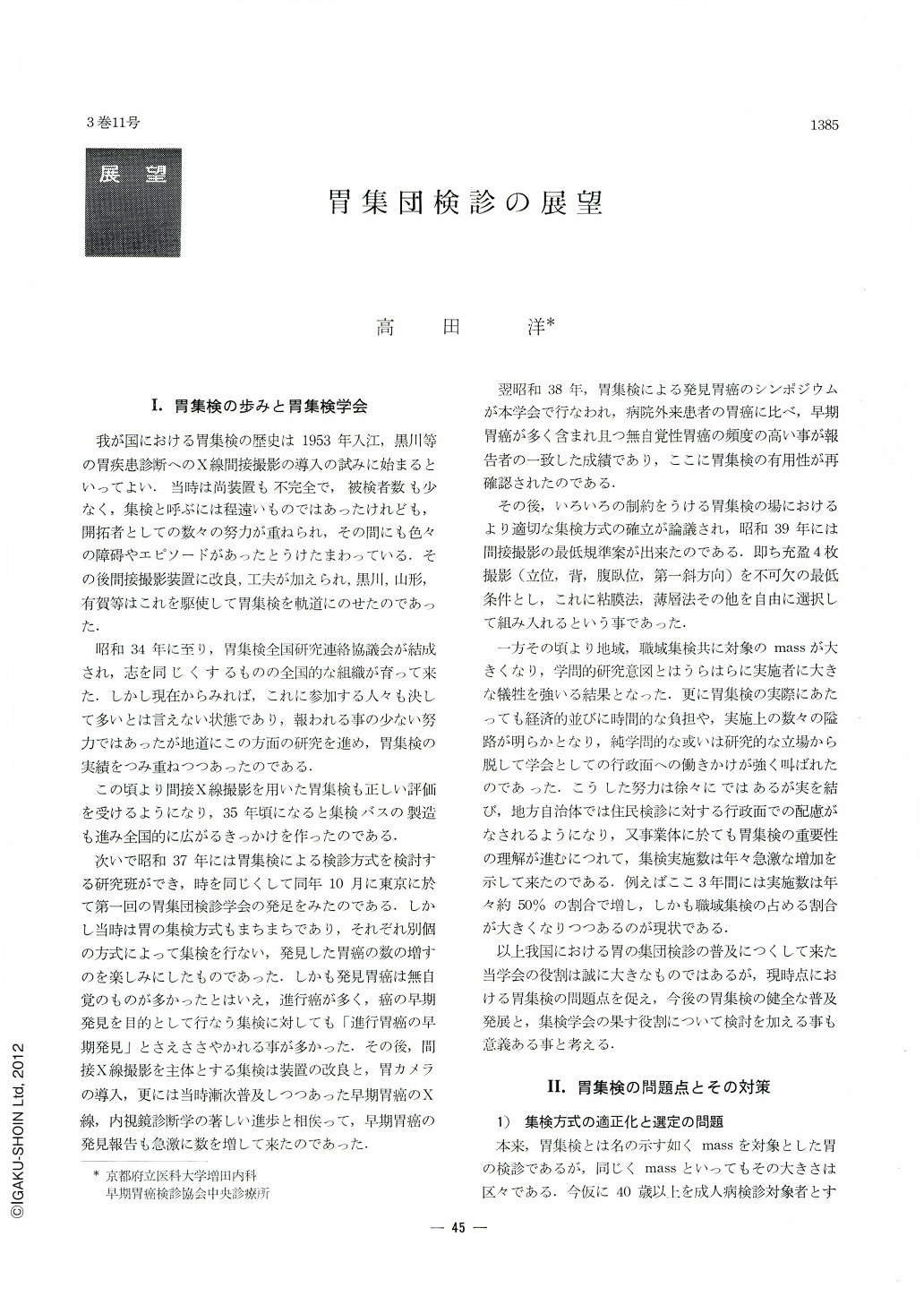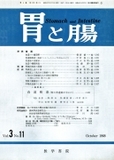Japanese
English
- 有料閲覧
- Abstract 文献概要
- 1ページ目 Look Inside
Ⅰ.胃集検の歩みと胃集検学会
我が国における胃集検の歴史は1953年入江,黒川等の胃疾患診断へのX線間接撮影の導入の試みに始まるといってよい.当時は尚装置も不完全で,被検者数も少なく,集検と呼ぶには程遠いものではあったけれども,開拓者としての数々の努力が重ねられ,その間にも色々の障碍やエピソードがあったとうけたまわっている.その後間接撮影装置に改良,工夫が加えられ,黒川,山形,有賀等はこれを駆使して胃集検を軌道にのせたのであった.
昭和34年に至り,胃集検全国研究連絡協議会が結成され,志を同じくするものの全国的な組織が育って来た.しかし現在からみれば,これに参加する人々も決して多いとは言えない状態であり,報われる事の少ない努力ではあったが地道にこの方面の研究を進め,胃集検の実績をつみ重ねつつあったのである.
Radiological mass survey of the stomach has come to flourish throughout the country these days. Taking a backward glance at the history of development in the past few years, and incorporating several topics of current interest voiced at the Society of Gastric Mass Survey,I have hereby tried to present an outlook for the future of this important undertaking.
In the past, the standardization of the indirect radiography was most urgent need, and we are happy to see the process adopted in most instances. Now, the encouraging sign is that a better and more precise survey method is going to be available, and it shall be open to alteration of the examination schedule according to difference of groups to be examined. For example, it is advisable to examine as many persons as posible in the case of people in general while more accurate survey method is desirable if the examinees belong to one occupational group. Another notable tendency is in the direction of more universal and coherent style of mass examination carried out at hospitals and special centers for the gastric mass survey, discarding the all too single-hearted dependence upon the examination carried out by car-loading X-ray apparatus alone.
Mass survey of the stomach is now rather highly regarded by the masses as well as within the professional circle, but at the same time we should be humbly willing to accept the criticism reported on the meeting of the Society, that the present system runs the risk of overlooking even progressive cancers at times.
The need is great, therefore, to improve the accuracy of the indirect radiography currently employed in the mass survey. The greater number of radiographic films, taken in many other projections and positions using mucosal pattern and double contrast method too, are necessary within the limitation of the mass examination method. On the professional side, the “reading” technique faces the great need of improvement. Moreover, the new method of indirect radiography with the X-ray TV holds a great promise as it moves from the research and development stage to the practical application in the fields. This indeed is noteworthy, and I am convinced there will arise a rapid development in the near future.
When the mass examination of the stomach comes to be carried out on the year-to-year basis, early detection of stomach cancer will be made far easier and surer, and the vast information obtained will be sure to contribute greatly to the study of the origin and the development of stomach cancer; the relation between cancer and ulcers, ulcerscars or polyps; and to the advance of gastroenterology in general.

Copyright © 1968, Igaku-Shoin Ltd. All rights reserved.


